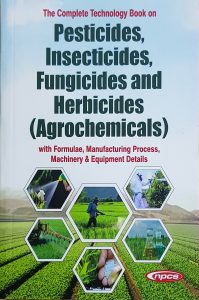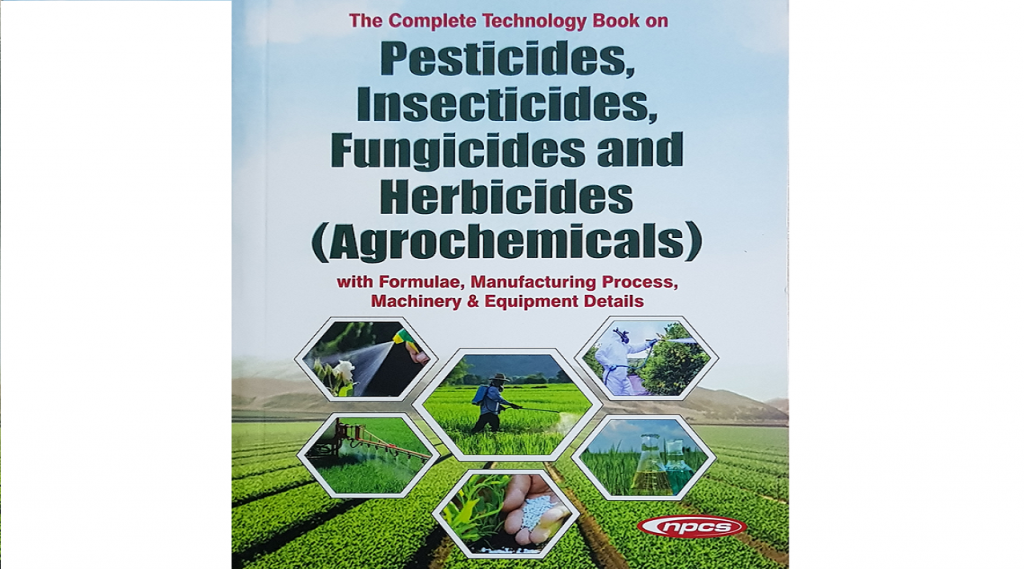
There is no doubt that modern chemicals, used in a range of fertilizers and pesticides, have enhanced food production globally. The effects of excessive chemical use on the environment and human health could no longer be ignored. Both terrestrial and marine species exhibit residual effects of agrochemicals. Higher-quality food and the use of fewer hazardous pesticides should be used to meet future food demand. To reduce the burden of chemical use, alternative approaches including the introduction of GMOs, precision agriculture, and IPM should be put into effect.
Around 1.8 billion people work in agriculture globally, and most of them use pesticides to protect their crops. Agrochemicals become an essential component of agricultural systems because of increased crop yields, which are essential for meeting the rising population’s demand for food.
Visit this Page for More Information: Start a Business in Agrochemicals Industry
The size of the global market for agrochemicals, estimated at USD 224.9 billion in 2021, is expected to increase at a compound annual growth rate (CAGR) of 3.2% from 2022 to 2030. The expansion is linked to the rising demand for crop protection products and fertilizers in the global agricultural sector. One of the main factors influencing the demand for agrochemicals may be the growing usage of chemical fertilizers by farmers to provide nutrients to the crops and increase their output.
While some people use pesticides for field and garden applications in and around their homes, others use pesticides for public health purposes.
Pesticides, fungicides, herbicides, and other substances including rodenticides and bactericides are among the chemicals used to protect crops. Herbicides are anticipated to rule the market for crop protection chemicals. In agriculture, pesticides that target plants are frequently utilized. They are employed to get rid of weeds and other unwanted plants from crops.
There are three practical techniques to apply fertilizer to cereals and grains. They will be blended with additional nutrients, which are sprayed, top-dressed individually, or applied to seedlings. For increasing cereal and grain yields, it is essential to use fertilizers in an appropriate quantity and at an appropriate rate. Approximately 70% of the world’s Nitrogen is devoted to the production of the three main cereal crops: rice, wheat, and maize.
Related Business Plan: Pesticides
Most of the rural population works in activities related to agriculture, which is the mainstay of India’s GDP.
India is a developing country that already has several ongoing issues, such as malnutrition, poor sanitation, inadequate medical treatment, etc. Industrial development, globalization, and economic development have all contributed to the never-ending list of occupational health issues. Since it has been established that the use of chemicals directly correlates with increased farm output, chemical use has become a significant component of Indian agriculture.
Agrochemical usage is prevalent in regions with better irrigation systems, such as Andhra Pradesh, Punjab, Karnataka, and Maharashtra which account for 38% of the nation’s total chemical consumption.
The pesticide industry in India is the 12th largest in the world and the largest in Asia. Consumption of those products has increased significantly during the past 35 years, and new industries are mushrooming all over the world because of the rising demand. Cotton, corn, fruits, and vegetables are the crops that received the most heavily applied pesticides from a variety of sources.
Read Similar Articles: AGROCHEMICALS
Along with knowledge of some of their negative consequences, the increased use of pesticides has made the public aware of the need for control.
India uses a lot of pesticides since weeding is done by hand and the country’s tropical environment leads to more frequent bug infestations. In contrast to the global market, where herbicides and fungicides have bigger market shares, pesticides have the second-largest market share in India.
About the Book
The main topics covered in this book by NPCS, “The Complete Technology Book on Pesticides, Insecticides, Fungicides, and Herbicides (Agrochemicals) with Formulae, Manufacturing Process, Machinery & Equipment Details 2nd Revised Edition”, include the specification of pesticides, fungicides, methods for determining chemical and physical properties, and methods for determining the purity of products through spectroscopic methods.
In addition, this book includes the formulas, manufacturing processes, and infrared and ultraviolet spectra of more pesticides. The book includes formulas and instructions for using various insecticides, fungicides, and herbicides. This book can serve as a guide for researchers, businesspeople, policymakers, and students.
The short-term perspective, the impact of restrictive and consolidating events on the development and introduction of new active ingredients, and the accessibility of technologies in India compared to the USA and the rest of the world are all covered in this second edition.
New solutions are still needed because of resistance development, but farmers’ access to these techniques has been hampered by increased costs and laws. Additionally, current trends in research and development are discussed, as well as the primary industries driving growth within the crop protection sector.
Related Feasibility Study Reports: Pesticides/insecticides (technical Grade) – Manufacturing Plant, Detailed Project Report, Profile, Business Plan, Industry Trends, Market Research, Survey, Manufacturing Process, Machinery, Raw Materials, Feasibility Study, Investment Opportunities
The second edition, which was published in 2022, presents a global overview of agrochemical use against the backdrop of upcoming agricultural output requirements and environmental concerns. This book investigates the relationship between agrochemical usage and property, producer data, and policy analysis for less developed and industrialized economies. The author Dr. Himadri Panda is a well-known consultant in this field.
About The Author
Dr. Himadri Panda is a collar who has written many books on agrochemicals and other organic chemicals used for crops and environmentally friendly products. This book is the improvised second edition which includes more in-depth knowledge about agrochemicals. Coming from an expert in this field, the handbook contains all the relevant information that is needed to prepare a business layout for an agrochemical manufacturing plant.
Read our Books Here: The Complete Technology Book on Pesticides, Insecticides, Fungicides and Herbicides (Agrochemicals) with Formulae, Manufacturing Process, Machinery & Equipment Details 2nd Revised Edition
Click here to send your queries/Contact Us
Conclusion
The second edition costs Rs. 1,875.00 (USD 50.67). It is a one-stop for all details that start-ups are looking for in the agrochemical manufacturing business. The only book that thoroughly discusses agrochemicals is this one. It is a wonderful guide to how-to information, from concept to equipment buying.
See More Links:
- Start a Business in Asia
- Start a Business in Potential Countries for Doing Business
- Best Industry for Doing Business
- Business Ideas with Low, Medium & High Investment
- Looking for Most Demandable Business Ideas for Startups
- Startup Consulting Services
- Start a Business in Africa
- Start a Business in India
- Start a Business in Middle East
- Related Videos
- Related Books
- Related Projects
- Related Market Research Reports
𝐂𝐨𝐧𝐭𝐚𝐜𝐭 𝐮𝐬
NIIR PROJECT CONSULTANCY SERVICES, DELHI
An ISO 9001:2015 Company
ENTREPRENEUR INDIA
106-E, Kamla Nagar, Opp. Mall ST,
New Delhi-110007, India.
Email: npcs.ei@gmail.com
Tel: +91-11-23843955, 23845654, 23845886
Mobile: +91-9097075054, 8800733955
Website: https://www.entrepreneurindia.co
DPP_20Art22
